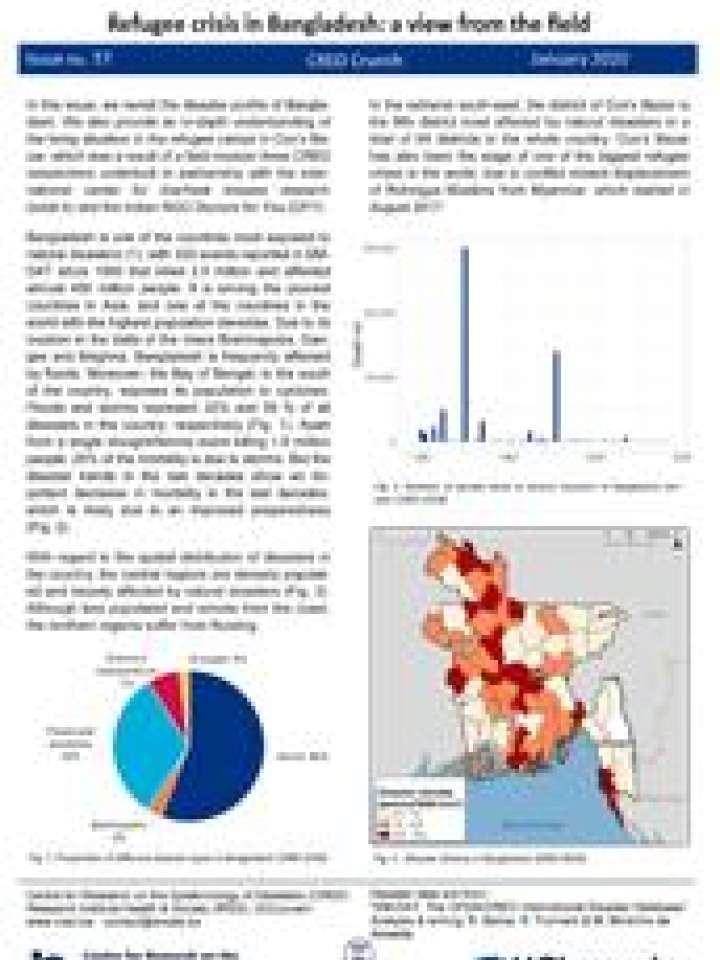Cred Crunch, Issue No. 57, January 2020 - Refugee crisis in Bangladesh: A view from the field
This issue revisits the disaster profile of Bangladesh.
It provides also an in-depth understanding of the living situation in the refugee camps in Cox’s Bazar, which was a result of a field mission three CRED researchers undertook in partnership with the international center for diarrheal disease research (icddr,b) and the indian NGO Doctors for You (DFY).
Bangladesh is one of the countries most exposed to natural disasters, with 320 events reported in EMDAT since 1900 that killed 2.5 million and affected almost 450 million people. It is among the poorest countries in Asia, and one of the countries in the world with the highest population densities. Due to its location in the delta of the rivers Brahmaputra, Ganges and Meghna, Bangladesh is frequently affected by floods. Moreover, the Bay of Bengal, in the south of the country, exposes its population to cyclones.
Floods and storms represent 32% and 56 % of all disasters in the country, respectively. Apart from a single drought/famine event killing 1.9 million people, 25% of the mortality is due to storms. But the disaster trends in the last decades show an important decrease in mortality in the last decades, which is likely due to an improved preparedness.
With regard to the spatial distribution of disasters in the country, the central regions are densely populated and heavily affected by natural disasters.
Although less populated and remote from the coast, the northern regions suffer from flooding.
In the extreme south-east, the district of Cox's Bazar is the fifth district most affected by natural disasters in a total of 64 districts in the whole country. Cox’s Bazar has also been the stage of one of the biggest refugee crises in the world, due to conflict related displacement of Rohingya Muslims from Myanmar, which started in August 2017.
Explore further
